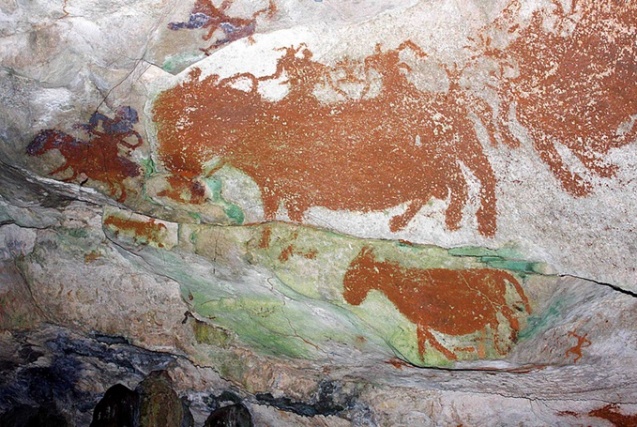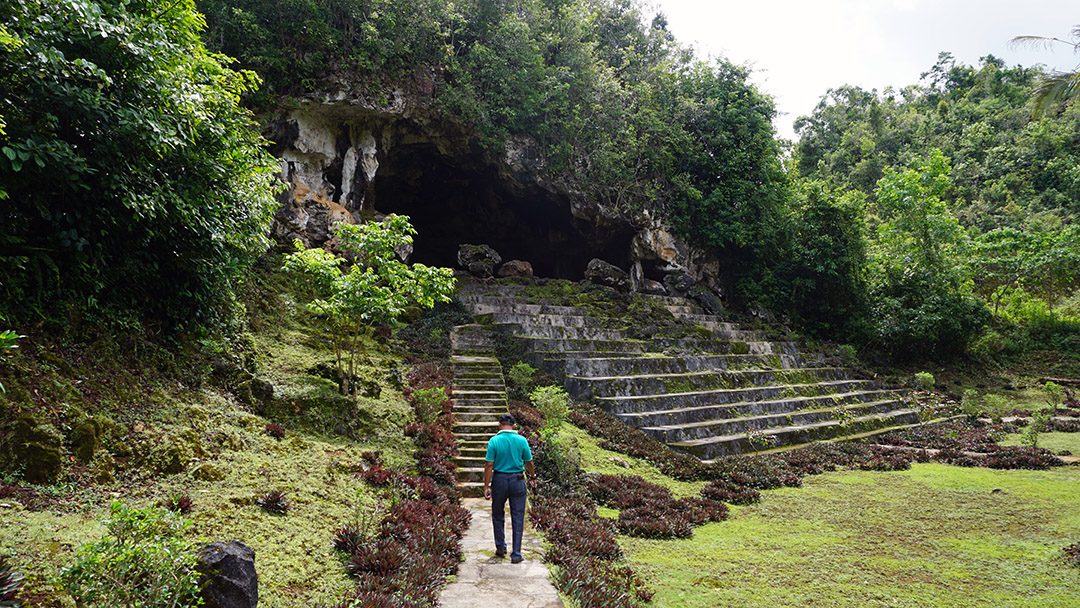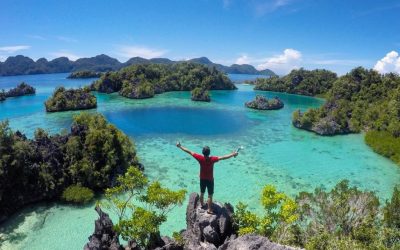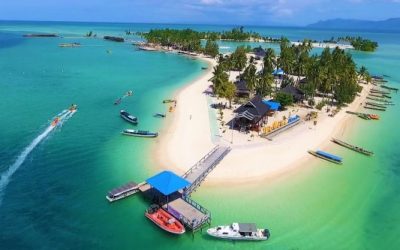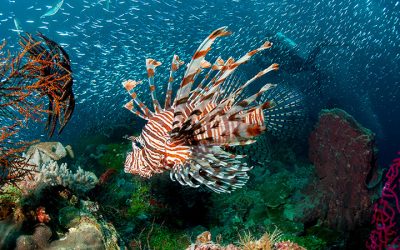Cultural Destination
Kobori Cave
Kobori Cave (Photo: @Indonesia Tourism)
Kobori Cave
A little bit of history is always needed to understand the place you are visiting. The Kobori Cave represents a concrete testimony of the ancient Muna Tribe in Megalithic era (around 4000 BC). This Indonesian National Heritage Site is also known as the “the cave of ink” for the fact that visitors who enjoy an excursion here, can witness some very old paintings which describes the way of life of this tribe. There are 565 megalithic paintings spread in several karst cave across Muna island, Southeast Sulawesi. Come and discover this wonderful place!
Cultural Tourism Destination
Kobori Cave
Tourist Attractions in Southeast Sulawesi
Labengki Island – Giant Clam Marine Reserve
No one knows that the second biggest Kima giant clam (Tridacna gigas) with the size of 50 cm can be found in
Bajo Coastal Village in Bokori Island
Located not far from Kendari City, this small island with white sand is a-must-visit in
Wakatobi UNESCO Biosphere Marine Reserve
Known as marine paradise, Wakatobi was designated as UNESCO marine biosphere in
Southeast Sulawesi
Batik Motifs
Ake Patra
Ake is related to the divinity and the composition of the universe. It is a symbol of
Pati-Pati Pinehiku
It symbolizes the hierarchy in society and the social status of the Mekongga
Wakatobi
It symbolizes the coastal beauty of the Wakatobi island and the symbol of Patra symbolizes
Discover
Indonesian
Batik
Motifs
Tongkonan
Toraja’s traditional house is called Tongkonan. Tongkonan is a place for
Sekar Jati
Sekar means flower and Jati refers to teak trees that symbolizes a strong mental character that
Daun Lada Hitam
The black pepper motif represents the main commodity of Bangka Belitung
Gonggong Siput
Gonggong (Strombus Turturella) is one type of sea snail found around
Manguni Minahasa
Manguni is identified as the symbol of the Minahasa people. Manguni is known as a
Tikar Natuna
The Tikar Natuna motif is adapted from the traditional making of pandanus mats in
Dayak Kamang
Kamang motif is generally found in the Dayak tribe shield because it is believed to
Tifa Totobuang
The batik motifs illustrate Maluku’s traditional music instrument called
Kawung
The Kawung motif was created by Sultan Agung Hanyokrokusumo (1593 – 1645) as a symbolic gift for
Singayaksa
The Singayaksa motif comes from the name of a place where Sultan Hasanuddin used to
Tabir Tanjung
Tanjung flower is a type of Cherry tree flower, which is commonly found in
Parang Seling
Parang Seling or “alternating daggers” is a royal batik motif. It is a feminine variant of
Besurek Rafflesia
The term “Basurek” refers to a textile that contains letters or inscriptions
Mahkota Siger
Siger is the crown of a noblewoman in ancient time. It is a symbol of femininity, strength, and
Bintik Tujuh
The Bintik Tujuh (Seven Dots) motif has 7 white spots and green color gradation as
Gedhog Kembang Waluh
a combination of Javanese cultural motif of the Majapahit kingdom (XII-XIV century) with
Ikan tambal
The word “Ikan” refers to fish. The philosophical meaning of Ikan Tambal means is
Prada Papua
The word “Prada” in the Javanese-Indonesian dialect means a batik textile that
Bekantan Pakis
This motif represents Pakis Haji (Polystichum setiferum), an endemic plant in
Awan Berarak
Awan Berarak is a combination of Dayak motifs and Malay patterns. The word ‘Awan Berarak’ means the
Wakatobi
It symbolizes the coastal beauty of the Wakatobi island and the symbol of Patra symbolizes
Keluak Daun Pakis
The word “Keluak” is a Minang language which means twisted or tangled. The Motif of
Jumputan Bintang
The word Jumputan means the tie-dye technique, while the word “Bintang” refers to
Pucuk Rebung Riau
Pucuk Rebung symbolizes heart determination in achieving goals, good luck, and
Merak Ngeram
The hatching peacock motif has a very deep meaning which refers to the sacrifice and
Buketan Bali
The Balinese bouquet (Buketan Bali) is a floral arrangement and the name is
Lok Baintan Floating Market
As you can imagine, the most authentic thing is that you can buy things and even
Paqbarre Allo
The word “Barre” means round and “Allo” means the sunlight. This motif is interpreted as
Ukir Sentani
The Ukir motif is a batik motif that is inspired by various traditional Sentani wood carvings
Srimanganti
The name of the Srimanganti motif is derived from Palace’s hallway that connects to
Bomba Mawar
This motif means sacred love for family, kingdom, and God; It also illustrates
Tubo Kelapa
Coconut tree is a symbol of a good character and strong mentality. It illustrates the more success a person, the more
Tenun Bima
The motifs are adopted from Bima woven textile. This pattern has received a great
Burung Bidadari
Bidadari birds are endemic birds in Halmahera. This motif represents an
Tanah Liek
The word “Tanah Liek” refers to clay in Minang language. It is also known as
Honai
The Honai is inspired by the traditional house of the Papuan community living in
Kain Cual
Cual textile tradition has existed since the 17th century. The word “Cual” refers to
Desa Na Tolu
The Desa Na Tolu characteristic pattern symbolizes the Batak philosophy of existence and
Kerawang Tegak Aceh
The Vertical Upright (Kerawang Tegak) Motif symbolizes a person who has a strong
Gorga Simeol-Meol
The Gorga Simeol-meol is a pattern of plant tendrils. it is regarded as a symbol of longevity and
Daun Sirih
This motif illustrates betel leaves that are used by Lombok communities as traditional
Malinau Cultural Festival
You will witness a unique competition that might not be found other than in
Biji Kopi
The coffee seeds motif illustrates the pride of local coffee specialities in
Pati-Pati Pinehiku
It symbolizes the hierarchy in society and the social status of the Mekongga
Hiu Taliyasan
Indonesia is also home to the world’s largest fish, the whale shark (Rhincodon typus). Hiu Taliyasan refers to
Teguh Bersatu
This batik motif shows the strength of the people of Kupang. It also represents a sense of
Wirasat
Wirasat or divine inspiration is a gift from God. This inspiration is symbolized by
Bultiya
The word ‘Bultiya’ is an acronym of the three major tribes in North Kalimantan, namely
Lipaq Sabe
Lipaq Saqbe contains a simple geometric classical motif with various flower decorations. This textile is
Gumin Tambun
Based on Hindu mythology, this motif symbolizes lucks, abundant wealth, and
Gajah Way Kambas
The motif illustrates the Lampung’s natural reserve, the Way Kambas. it also symbolizes
Besurek Rembulan
This batik illustrates praise for God who created the wonderful universe
Parang Rusak
Another meaning behind this motif is an unconquerable spirit, symbolized by
Pattimura
Pattimura is the name of an Indonesian hero who fought against colonialism in
Raja Ampat
Raja Ampat motif represents the marine life at Raja Ampat archipelago in
Bale Lumbu
This motif signifies the welfare of the ancient Sasak society. Bale also symbolizes the
Tengkawang Ampiek
With its many advantages, the Dayaks use this leaf in ritual ceremonies. This plant is a symbol of
Sandeq
Sandeq Boat is a symbol of the maritime importance of the West Sulawesi region. The greatness of
Tangerang Herang
Tangerang Herang motif is a symbol of Tangerang city. The Tangerang Herang batik motif consists of
Sero Tangga
The Sero Tangga illustrates an endearing feeling and sacrifices of a person to fulfil
Salakanagara
Salakanagara batik motif illustrates the first kingdom in the Betawi land
Pala Salawaku
This motif illustrates the unique weapons of the Maluku region, namely
Ake Patra
Ake is related to the divinity and the composition of the universe. It is a symbol of
Gonggong Beruntun
This motif illustrates that a person should maintain a positive attitude and
Sekomandi
Its philosophical meaning is the eternal union which refers to a saying “until death do us part”
Sido Mulyo
Sidomulyo is one of the classical motifs, which is specifically used for the bride’s costume in
Insang Ikan
Insang refers to the gills of the fish. This is a typical pattern of Malay ethnic who inhabits
Kaharingan
The Kaharingan or ‘tree of life’ based on the Dayak tribes’ belief system. This tree symbolizes
Gamolan
This motif illustrates Gamolan, a bamboo musical instrument of Lampung that is

